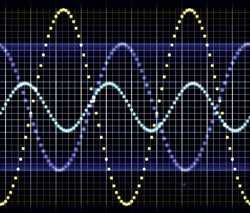ECE 3250 Contents
Course Description
Syllabus
Lecture Notes and Handouts
Homework and Exams
Note: Projects and Labs are not available for this course.
Lecture Notes and Handouts
A complete course monograph by David F. Delchamps can be downloaded here [PDF].
- Lecture 1: Sets, mappings, numbers
- Lecture 2: Cardinality, various important sets of numbers
- Lecture 3: Real numbers, proof by induction, prime numbers
- Lecture 4: Modular arithmetic, Euler’s Theorem
- Lecture 5: Modular arithmetic continued; Hellman-Diffie-Merkle key distribution in cryptography
- Lecture 6: Modular arithmetic and public-key cryptography, including RSA encryption
- Lecture 7: Cauchy sequences, limits, max, min, sup, inf
- Lecture 8: Convergence continued; discrete-time signals: generalities; important spaces of signals
- Lecture 9: Operations on discrete-time signals, including convolution
- Lecture 10: More on discrete-time convolution
- Lecture 11: Discrete-time LTI systems generalities
- Lecture 12: Examples of discrete-time LTI systems; causality
- Lecture 13: Discrete-time BIBO stability; continuous-time signals
- Lecture 14: Continuous-time convolution and existence thereof
- Lecture 15: Continuous-time LTI systems; impulses and impulse response
- Lecture 16: Properties of continuous-time LTI systems, including causality and BIBO stability
- Lecture 17: Periodic signals, inner-product spaces
- Lecture 18: Hilbert spaces, orthonormal sets
- Lecture 19: Fourier series as orthogonal expansions; systems reasons for studying Fourier series
- Lecture 20: Frequency response of continuous-time LTI systems; definition of the continuous-time Fourier transform
- Lecture 21: Operational rules for the continuous-time Fourier transform
- Lecture 22: Fourier transforms and continuous-time LTI systems; frequency-selective filters
- Lecture 23: Amplitude modulation with asynchronous or synchronous demodulation
- Lecture 24: Signal representation via wavelets
- Lecture 25: More about wavelets
- Lecture 26: Haar wavelets and multi-resolution analysis
- Lecture 27: The discrete-time Fourier transform (DTFT)
- Lecture 28: DTFT continued; sampling and interpolation
- Lecture 29: Sampling continued: the Shannon-Nyquist Sampling Theorem
- Lecture 30: More on the Sampling Theorem
- Lecture 31: Pulse sampling and time-division multiplexing
- Lecture 32: N-point signals, cyclic shifting, circular convolution, and the DFT
- Lecture 33: N-point signals and the DFT continued
- Lecture 34: Three applications of the DFT
- Lecture 35: The FFT
- Lecture 36: The z-transform
- Lecture 37: The z-transform and discrete-time LTI systems; transfer functions
- Lecture 38: The z-transform and BIBO stability of discrete-time LTI systems; beginning of discussion of singular value decomposition (SVD)
- Lecture 39: The SVD continued, including applications to linear least-squares optimization
- Lecture 40: More on the SVD, including the Moore-Penrose pseudo-inverse
